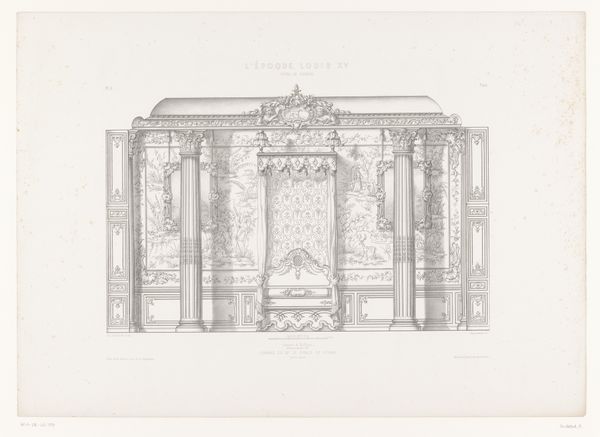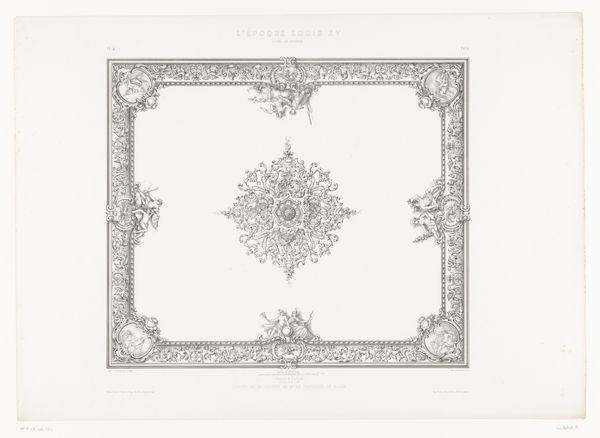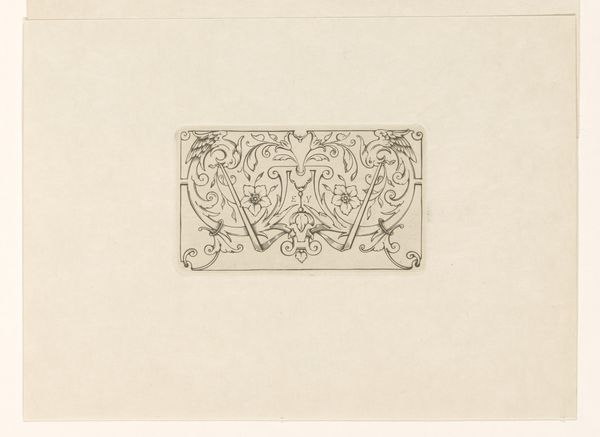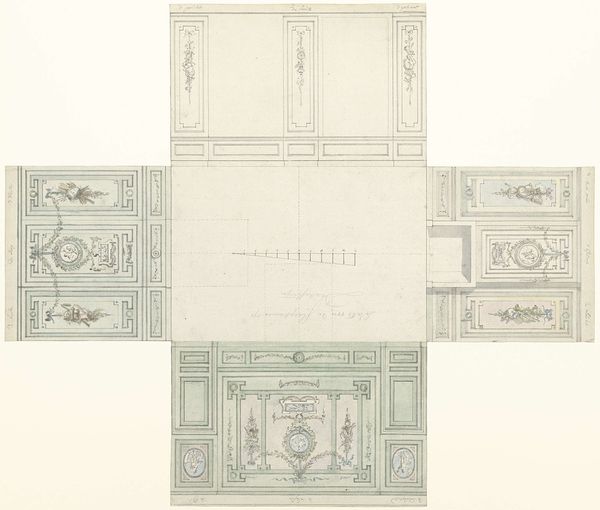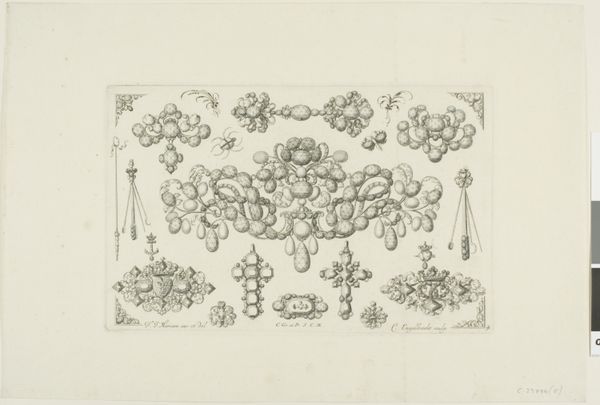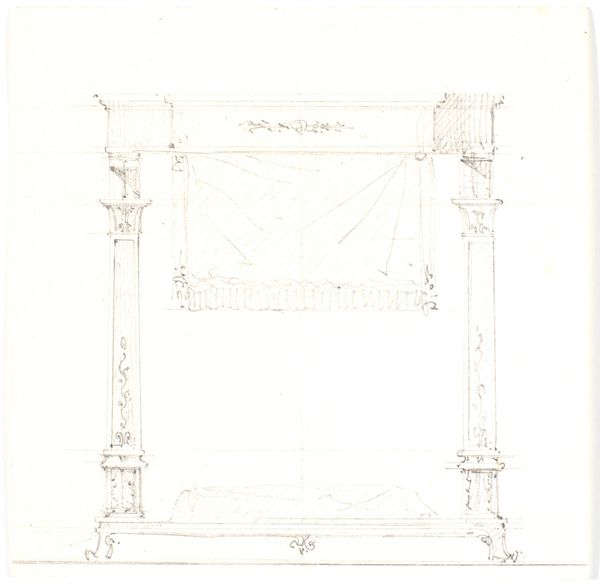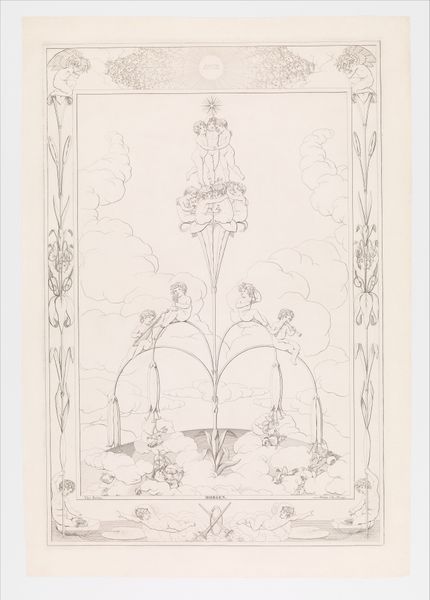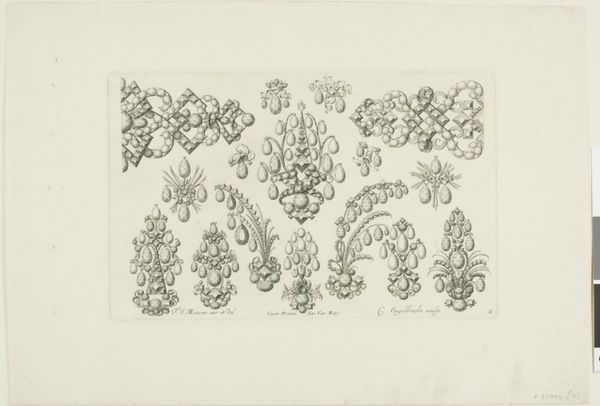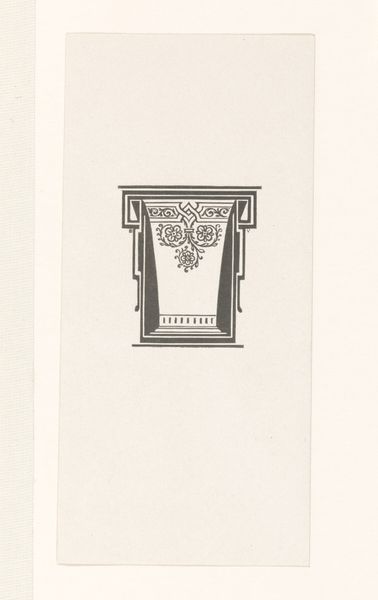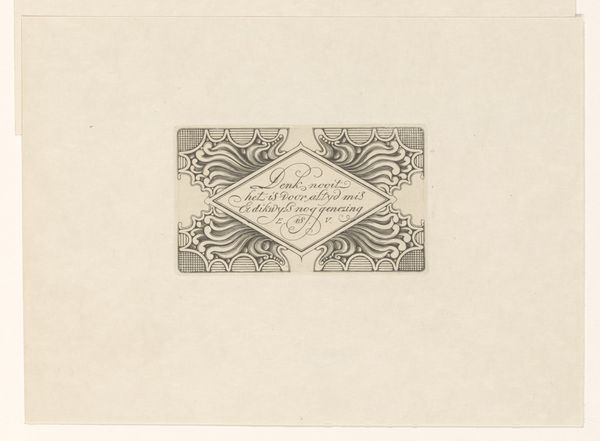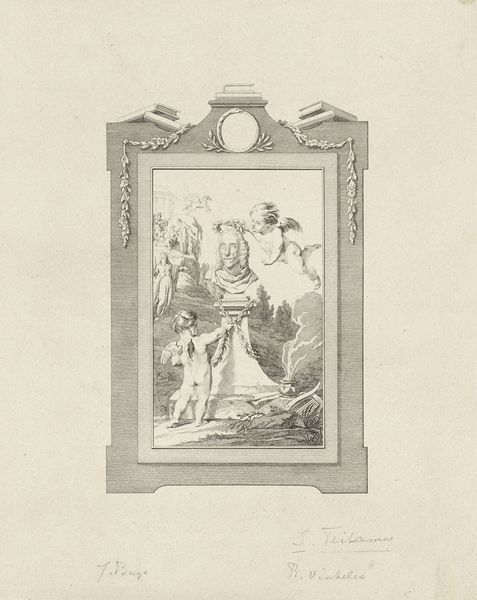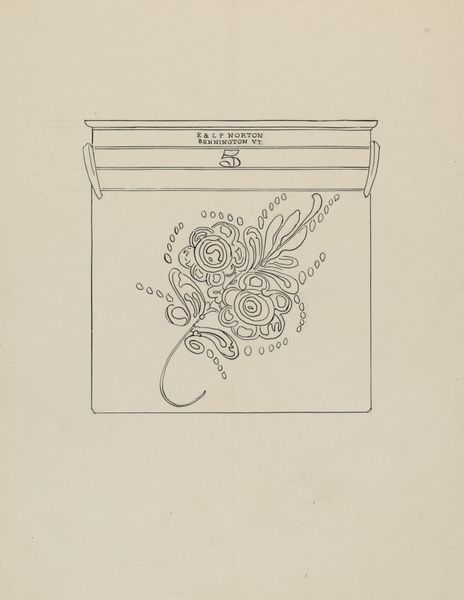
drawing, print, engraving, architecture
#
drawing
# print
#
pen illustration
#
line
#
decorative-art
#
engraving
#
architecture
Dimensions: height 450 mm, width 630 mm
Copyright: Rijks Museum: Open Domain
Curator: This detailed print from 1859 presents "Ontwerpen voor friezen en balusters," or "Designs for friezes and balusters," by Alphonse Guilletat. Editor: The immediate feeling I get is one of opulent restraint, if that makes sense. All this swirling ornamentation, but held in check by the rigid framework of architectural design. There is an intense concentration on visual detail, but there's something inherently classed and excluding about this style. Curator: Absolutely. The Louis XV style, referenced on the print, evokes specific values, right? Think about how ornament became almost a language, each flourish a reference. Those floral motifs and delicate curves symbolize luxury, leisure, and a connection to nature carefully cultivated by the aristocracy. Editor: It's the leisure that gets me. Who had the time to craft and contemplate this kind of detail? The Rococo style was a political aesthetic too, projecting power by showcasing wealth. How might a baluster’s design, as rendered here, promote—or undermine—notions of gender or class identity through ornament? Curator: You're right to point out the class element, of course. Consider, though, the power of these symbols even beyond their immediate context. The recurring motifs of shells, acanthus leaves, and asymmetrical designs… these forms echo and reshape visual motifs that date back to antiquity. It speaks to the artist’s, and perhaps the patron's, classical learning, a very common approach. Editor: So we're building cultural and symbolic capital by consciously referring back to what was considered valuable, and also inherently legitimising their reign or control. It solidifies power in the most tangible way by embedding their symbols and tastes in our lived environment, through buildings and structural components, with all the political weight implied by such permanency. Curator: Exactly. The permanence implies a cultural continuum; yet styles and fashions are always contested. How does cultural memory survive such inevitable transitions? Looking closely at works like these we can glimpse the complicated relationship between power, symbol, and collective identity. Editor: It’s fascinating to consider these architectural details as potential sites of contestation. When do decorative motifs embody and uphold tradition, and when do they begin to suffocate and exclude? Curator: It also opens an unexpected pathway towards understanding collective anxieties: that which we build, materially and symbolically, either connects or estranges us, both now and well into the future. Editor: Precisely.
Comments
No comments
Be the first to comment and join the conversation on the ultimate creative platform.
